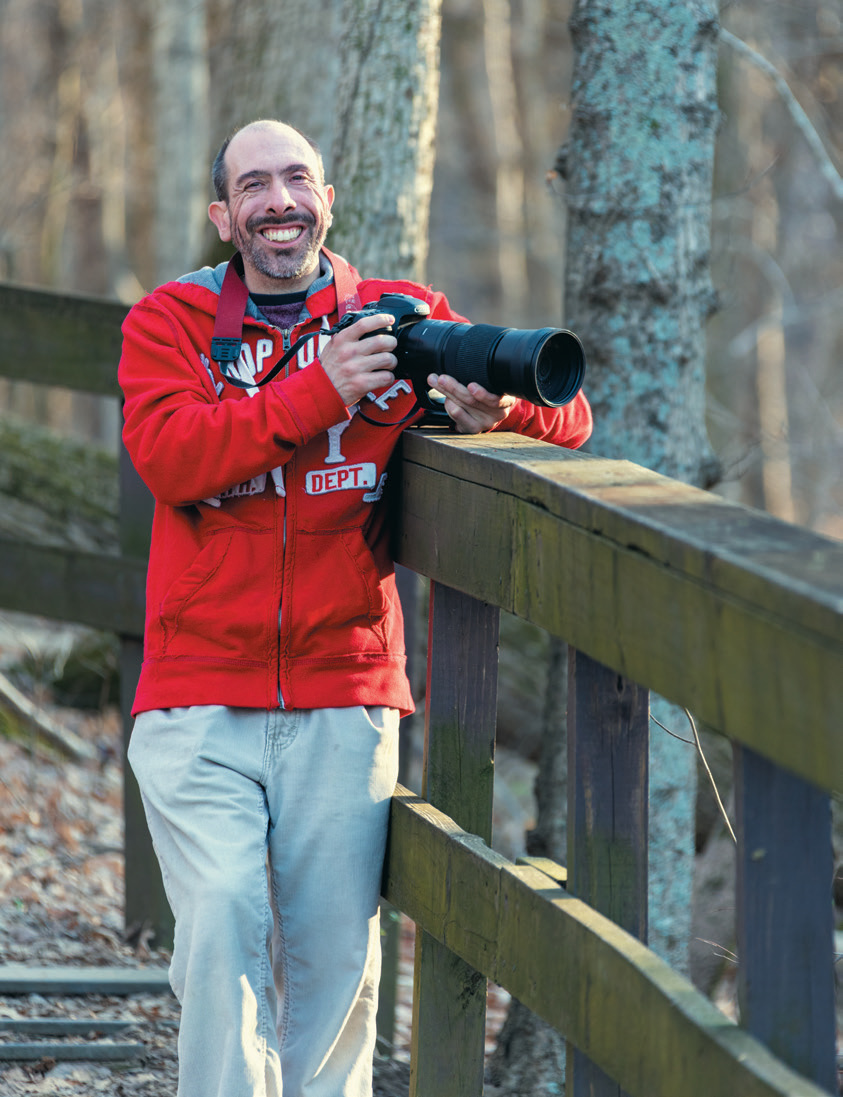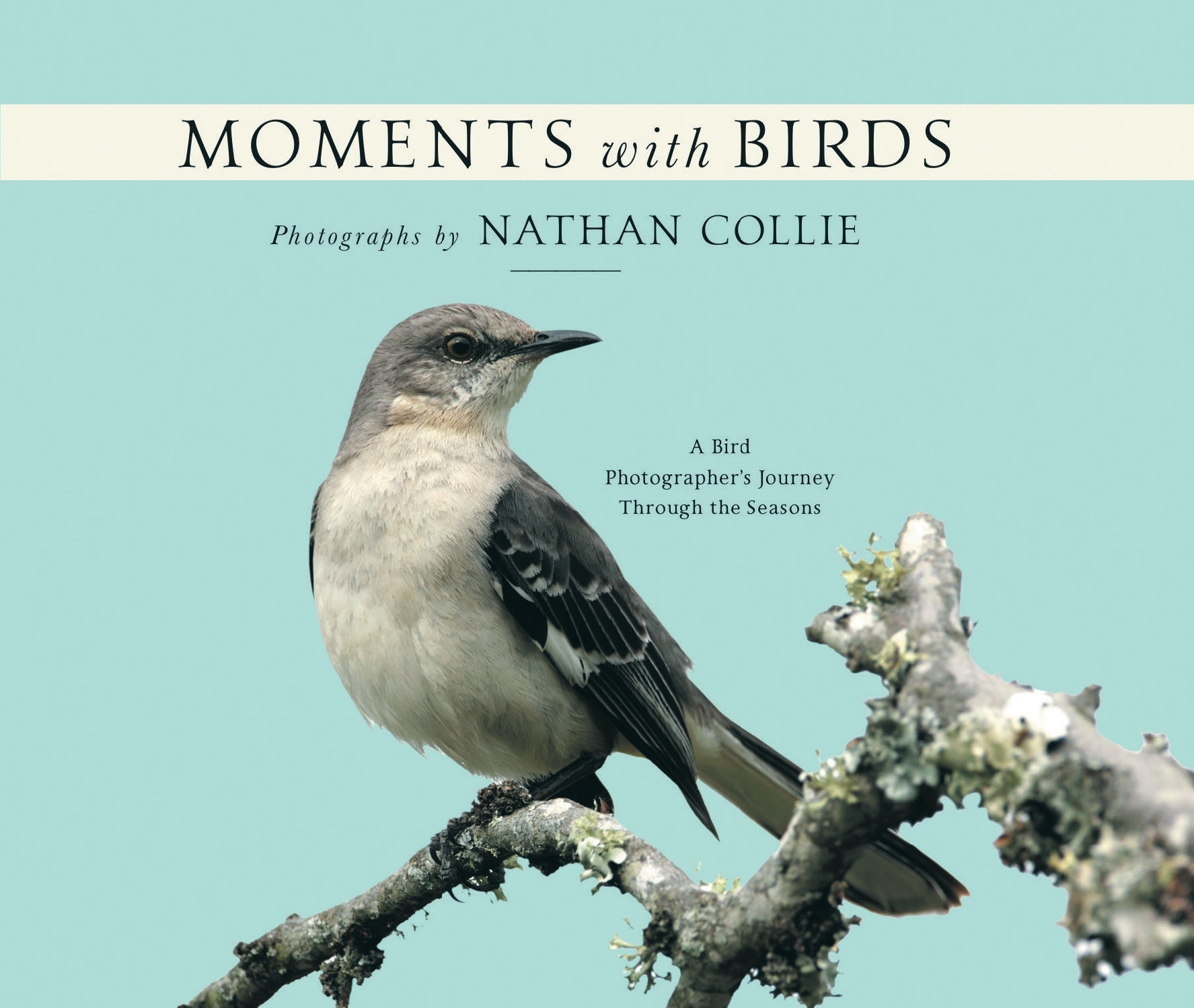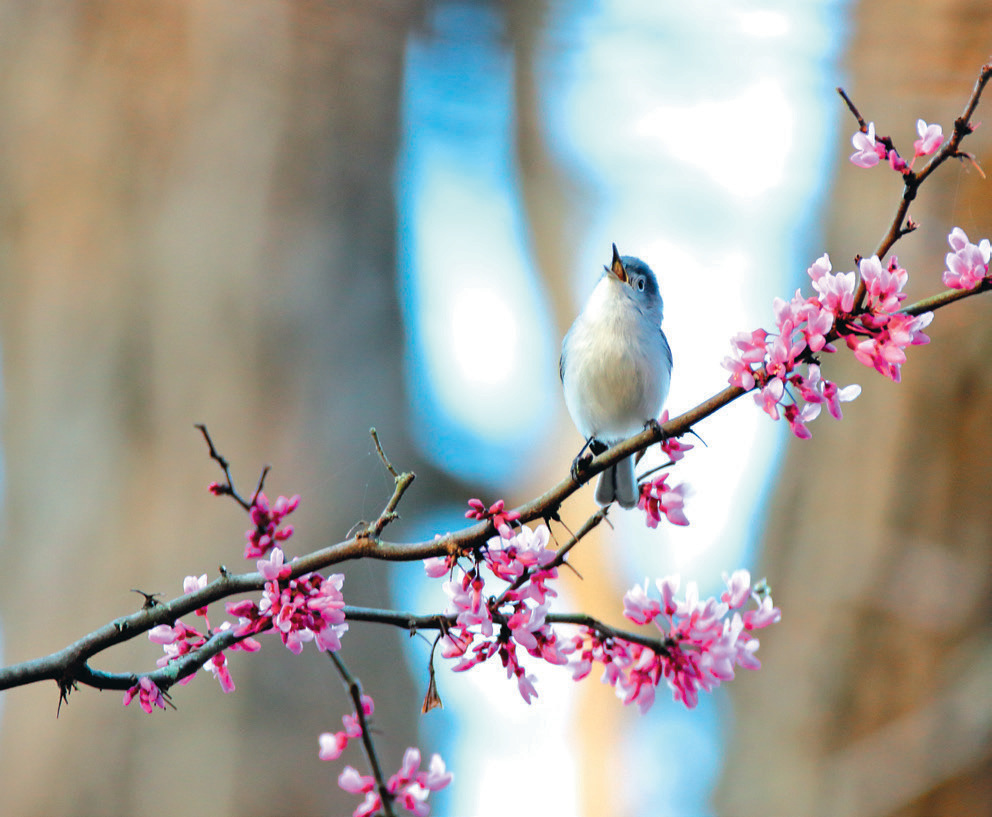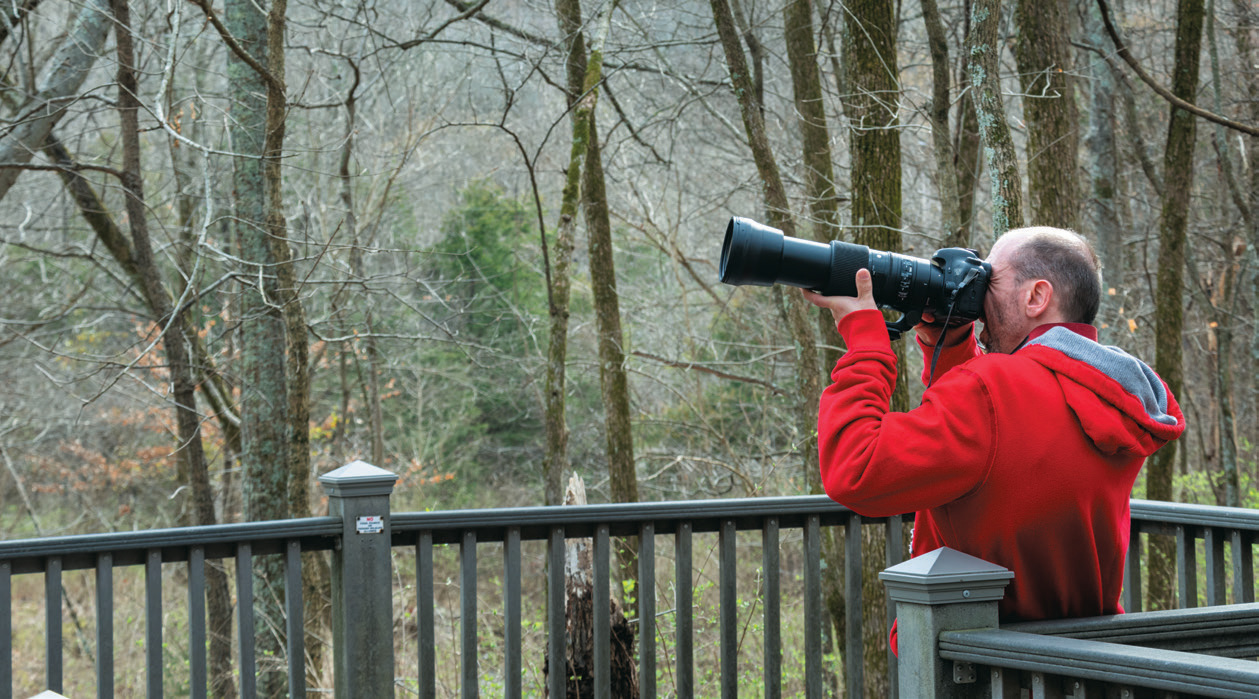Imagine you are walking through the woods, and there’s silence all around except for your shoes trudging along on the dirt path beneath you. You round a corner, and, all of a sudden, there are birds squawking, almost as if they’re alarm bells. It’s an experience many of us have had while walking in the woods, and many of us march on trying to continue our hike or get to a destination. But for nature photographers like Nathan Collie, this is a sign to slow down or even stop in hopes that he might see a bird fly by or resting on a nearby branch.
“You’ll hear them before you see them,” Nathan said. “A lot of times that’s how I will know when to stop.”
Once he slows down, there are times when the birds will pop right out because they don’t perceive him as a threat or are even curious about him (since that is not what humans usually do on the trails). He has to be careful, though, since even a quick movement like crouching down to get a better angle for his photos could make the birds take flight.
Nathan Collie is a nature photographer, filmmaker and author of “Moments with Birds: A Bird Photographer’s Journey Through the Seasons.” He has been taking photos of birds, specifically, for at least 10 years.
With over 160 photographs, his book showcases birds he’s documented in Tennessee over the years, throughout all the seasons — whether migratory or resident, along with a couple of rare birds.
A lot of times, people ask Nathan, “Why birds?” They wonder, if someone is going to chase wildlife through the woods to photograph, why chase something so small?
Nathan grew up being outdoors. His grandmother who lived in Memphis was a big birder, and she got his curiosity up about birds as a child. Every time he visited Memphis to see her, they would talk about the birds they had seen, and she would give him some knowledge on what types of birds to look out for during different parts of the year. He found it exciting to discuss something he didn’t know much about despite his extensive experience outdoors as a kid.

Nathan’s mom is also a photographer as well as an artist, so he grew up being in front of her camera a lot and being around creative, like-minded artists. She often photographs landscapes and people, whereas Nathan has a different photography style, mostly focusing on wildlife. His mom helped develop his artistic eye for the “why” behind his photos, or, “What is it about what you’re looking at that has potential or importance?”
“Even if you’re photographing people, you’ve got to loosen them up before you can find their personality, and that’s when you get those shots,” Nathan said. “If you have the opportunity to be around an animal for a long period of time, he’ll give you a window of some of that personality, and I think that’s what everybody’s always hungry for: Can I get that photo where that personality shines before they go back on autopilot?”
Nathan said he was talking to a friend recently about how birds make great subjects, whether in photography or even in artwork.

“Photography-wise, they are one of the few animals that I’ve found where they give you so many different poses in such a very short period of time,” Nathan said. “It’s kind of hard to convince a deer to do a handstand or a bunch of different poses. It might take him 10 minutes to give you a different angle. A bird could come in and within 30 seconds do five different poses and fly away, which is one extra pose if you’re actually paying attention.”
Nathan also noted that observing a bird long enough will reveal specific spots to which it returns. Then photographers can go to that area to get comfortable and wait for the right moment rather than trying to chase birds through the woods to capture their photos.
“Animals are almost creatures of habit like people,” Nathan said. “Everybody’s got their favorite bench or spot that they go to hang out. But sometimes, the best way to get wildlife is just to go light (with little equipment) because sometimes it’s really, very spontaneous. I think that’s where the excitement is because you don’t know. It’s kind of like a scavenger hunt, and if you get lucky, you’ll have a story to tell.”
Nathan often uses a Canon 7D Mark II with a Sigma 150 mm to 600 mm lens when photographing birds. He said that if someone is just getting into photographing birds, a great way to practice is by taking photos of the bird feeder in their yard. He also recommended getting a tripod or brace to minimize camera movement and taking the camera off autofocus.
“It’s great that cameras nowadays are very sophisticated, but when there are very fast-moving subjects, (cameras try) to outsmart them and almost do the opposite of what you want them to,” Nathan added.
Nathan manually focuses his camera on a branch or on part of a feeder where the birds land. Then, he doesn’t have to look through the viewfinder because everything is set up for him, and he can watch the branch from far away and hit the shutter right when the bird starts to fly. He said that technique is a great way to get more bird photos in focus.

Nathan said, for birds, the most important part of the body to have in focus is probably the head.
“I’ve had a couple of shots in low-light conditions where the head and part of the neck are in focus and the rest of the body out of focus, and the wings with the motion blur can almost really look artistic. Even if you wanted to try and get that shot, it just wouldn’t work,” Nathan said.
“When you’re out there having fun shooting and not like, ‘Everything has to be tick-tack sharp,’ you’re just kind of like, ‘If he’s here, I just want evidence to tell somebody,’ that’s usually when you get some of the fun shots because you’re just loose, and you’re not tense,” Nathan said.
As Nathan took many photos of birds over the years and as he met people and exchanged bird knowledge with them along the way, he has realized that there are a couple of bird species that come through Tennessee that are in serious decline. That knowledge gave him more of a mission to take photos of as many bird species that come through Tennessee as he can since there might come a time when some are not around anymore.
Nathan’s book also gives educational tidbits on some of the defining features of specific bird species and insight into their migratory patterns. The book also addresses whether a species is in decline; Nathan said birds can show the first signals that an ecosystem is doing well or hurting.
“If the birds come through an area that is struggling, that’s kind of like the tip of the iceberg before that ecosystem collapses,” Nathan said. “Naturally, when people notice that something’s wrong, it’s already because the deer or the bigger animals are struggling, but at that point, it’s almost at the point of no return.”
Nathan said that when he started photography, he always wanted to focus on wildlife because he grew up wanting to be a conservationist. But he thought his unique skill set and background would be better suited to documenting wildlife, in particular birds, through his photos and videos and utilizing his work to help conservation efforts when he can. Some of his videos of birds play in the visitor center at Radnor Lake State Natural Area in Nashville, where he often visits for photo shoots.
In his book, Nathan also included some actions that individuals can take to help bird populations, in another sort of conservation effort on a more individual scale. Nashville’s Warner Parks told Nathan that the two main killers of birds are cats and window strikes. Nathan said that ways to prevent window strikes include putting anticollision sticker decals on windows to help birds see the panes and installing special non-bird-strike glass.
Nathan’s book is laid out by season, starting with spring and ending with winter. The book includes photos, informative and anecdotal captions and photo locations to give readers an idea of what kinds of birds they might be able to identify during certain parts of the year in specific environments in Tennessee.

“With some of the species, I’ve documented them a couple of times (in the book),” Nathan said. “In the spring, a lot of times the birds will have their breeding plumage or breeding colors where they’re really vibrant and their patterns and are just very in your face, but the same bird in the fall could have almost no color.”
April is a peak month for seeing migratory bird species in Tennessee, Nathan said. Spring is also his favorite season when it comes to birds.
“One of the reasons why I like spring is because it’s when they’re probably the most vocal,” Nathan said. In the summer, they are pretty talkative here and there. In the fall, unless it’s about food, they’re not very chattery. In the winter, they’re pretty quiet.”
“But in the springtime, you can hear them from a distance,” Nathan said. “And if I want to see birds, I should go follow the song.”
For more information on Nathan Collie or to order his book, “Moments with Birds: A Bird Photographer’s Journey Through the Seasons,” visit his website, nathancollie.com. You can also find him on social media at @nathan.collie2 on Instagram and @nathan.collie.5 on Facebook.


